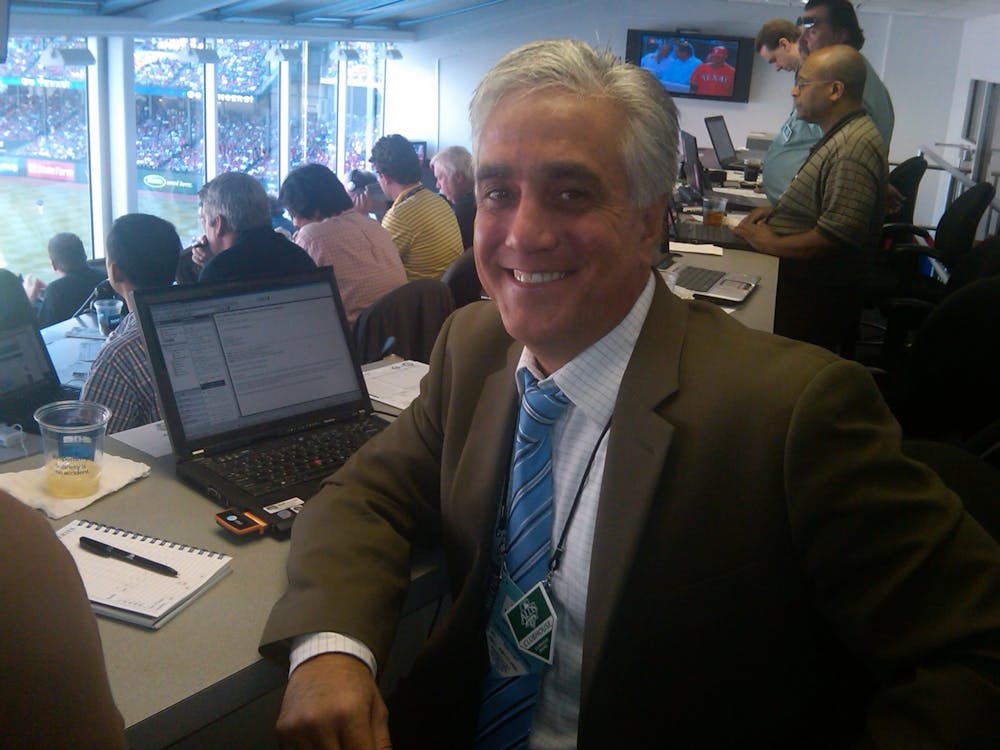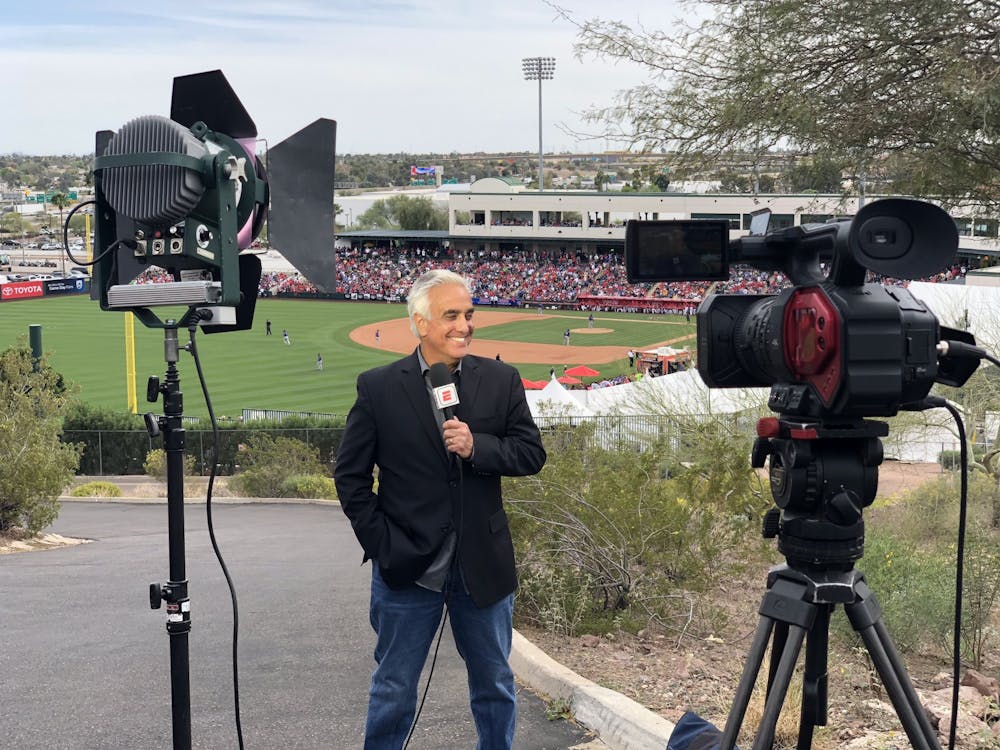Professor Paola Boivin saw former ESPN baseball reporter Pedro Gomez about five times per semester walking down the halls of the Walter Cronkite School of Journalism and Mass Communication building, heading to a class to speak to students.
On one occasion, she jokingly asked him, “What are you doing here again?”
He laughed, and she remembered him saying, “I would have liked if that had happened to me when I was young, that someone was there to make me better, to guide me in the right direction.”
Gomez died at the age of 58 in his home on Feb. 7, leaving behind a legacy in sports journalism covering some of baseball's most iconic stories, such as Barry Bonds’ chase of Hank Aaron’s single-season home run record.
He also left behind a strong influence on young sports journalists, sharing his expertise in the field with those eager to learn.
ASU adjunct professor Bill Hill worked with Gomez at the Arizona Republic, where Gomez wrote from 1997 to 2003, and was a colleague while the two worked in baseball afterward — Gomez with ESPN and Hill with MLB.com.
Hill said Gomez talked to his class every semester and agreed “without hesitation” to speak again. Hill sent Gomez a Zoom link for his class on the morning of Feb. 7, hours before Gomez died.
"The students just love having him there," Hill said. "I have had so many of my former students reach out to me last week with condolences, thanking me again for having Pedro visit the class. He made a real impression."
Students who experienced his class visits said he was not a typical guest speaker.
"You can tell when a guest speaker really cares about being there and is trying to engage students and clearly had their best interest in mind," Cronkite School alumnus Jack Harris said.
Harris, now a sports reporter for the Los Angeles Times, introduced himself to Gomez at a Dodgers spring training.
Harris said Gomez periodically followed up with him whenever he liked a story or had some points of advice, including when one of Harris' articles was mentioned during a 2020 World Series broadcast.
Marco Peralta, a senior studying sports journalism, saw Gomez as someone he aspires to be like: a bilingual speaker who covers baseball in two languages.
"He gave me more motivation to make me realize how gifted I am to be able to cover this sport in both English and Spanish," Peralta said. "So he told me, 'Use your gifts and talent being bilingual for your future.'"
Peralta planned to shadow Gomez at spring training in 2020, but the COVID-19 pandemic resulted in those plans falling through. He was supposed to get another chance to do so this spring before Gomez died.
Hill said Gomez especially wanted to aid “underdogs,” whether it be BIPOC journalists like himself or women in sports, like Boivin, who also worked with Gomez at the Arizona Republic.
Boivin said she was never comfortable in MLB clubhouses as a female reporter. She called it the most difficult aspect of her job, comparing it to walking into a teachers' lounge while people are changing clothes.
Boivin said she would peer down at her shoes to avoid players thinking she was looking at them. Gomez would stand by her and tell her when a certain player was available to talk.
One day, then-Dodgers pitcher Orel Hershiser reassured Boivin that she belongs in MLB clubhouses. Boivin told Gomez that story, and he arranged for Hershiser to appear in a tribute video at her Arizona Sports Hall of Fame induction.
In 2010, Jane Lee, 22 years old at the time, was at her first spring training as an MLB.com reporter for the Oakland Athletics. Lee said she felt slightly daunted being in the clubhouse but was approached by Gomez, who introduced himself, adding he greeted everyone in there.
"He wants to make sure that you're doing good, that you're doing good work, and he wants to help you in any way possible," Lee said.
Gomez and his wife spent time with ASU baseball head coach Tracy Smith and his wife on Feb. 6 talking about why aiding young reporters was so important to him, that he felt a responsibility to give back and instill the right ideals, like integrity and sticking to one's word.
Although Gomez will relay no more words of wisdom to reporters, his name will still contribute to the careers of many.
His family, along with the Cronkite School, established the Pedro Gomez Foundation, a fund that will support student scholarships at the school.
Lee called the tribute “perfect.”
"It's in the spirit of what Pedro was always trying to do and how he lived his life," Lee said. "Making sure that the next person coming up felt welcomed, included and supported. That's what he did day in and day out with so many young journalists."
Reach the reporter at alexjweiner@gmail.com and follow @alexjweiner on Twitter.
Like State Press Sports on Facebook and follow @statepresssport on Twitter.
Continue supporting student journalism and donate to The State Press today.





